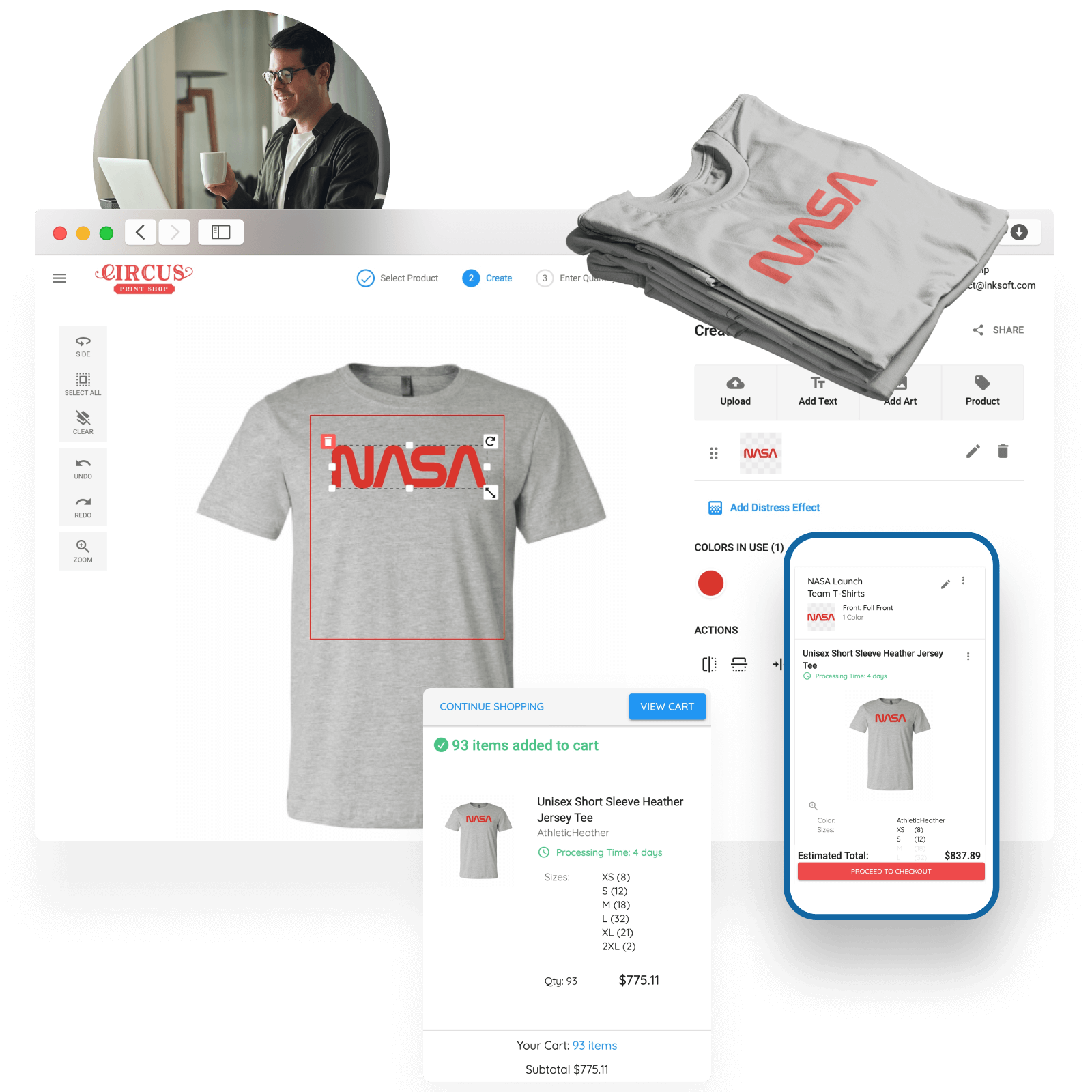Within today's rapidly evolving digital landscape, organizations are constantly looking for ways to boost customer satisfaction while optimizing their operations. Web-to-Print software has surfaced as a game-changing solution in the print industry, offering a myriad of benefits that benefit both print shops and their customers. By allowing users to modify and order printed products online, these technologies not only make easier the ordering process but also give customers with increased control over their purchases.
As we delve into the world of Web-to-Print solutions, we will discuss how these innovative tools are changing the printing landscape. From improving order management and workflow efficiency to facilitating personalized printing experiences, Web-to-Print technology is at the cutting edge of improving the overall customer experience. Whether you are a print shop owner who wants to increase online sales or a business aiming to provide personalized products, understanding the advantages of Web-to-Print technology is vital for staying relevant in the modern market.
Comprehending Web-to-Print Services
Web-to-print solutions refer to a set of technologies that enable businesses and consumers to create, modify, and request printed products online. These solutions streamline the printing process by allowing users to submit designs, choose print specifications, and place orders through a web interface. With the growing reliance on digital platforms, web-to-print has become crucial for print shops aiming to improve their services and cater to an increasingly tech-savvy clientele.
At the heart of web-to-print solutions is the integration of e-commerce functionalities with printing services. This blend empowers customers to engage in personalized printing experiences without the necessity for direct contact with sales representatives. By leveraging standardized layouts and advanced design tools, users can design unique products adapted to their specific needs, all while enjoying the ease of online access and order tracking.
As the print industry evolves, web-to-print solutions have become more complex, incorporating capabilities such as variable data printing and systematized workflows. These innovations ease the management of print orders, shorten turnaround times, and minimize errors. Furthermore, the flexibility of web-to-print solutions ensures that businesses can grow and adapt to changing market demands while maintaining a high level of customer satisfaction.
Advantages of Web-to-Print Solutions for Businesses
Web-to-print services offer a range of benefits that can significantly enhance the operational efficiency of companies. One of the primary benefits is the simplification of the order system. With an all-in-one online platform, customers can easily customize and place their print orders directly through a web platform, which reduces the risk of human error often associated with traditional order taking. visit the site translates into faster turnaround times and improved inventory management, allowing companies to more effectively meet customer demands and expectations.
Another notable advantage is the ability to provide personalized experiences to clients. Web-to-print software enables companies to offer customized products tailored to individual preferences. This capability not only increases customer satisfaction but also encourages repeat transactions, as customers appreciate the ability to create distinct items such as custom branding or customized gifts. As consumers continue to seek personalized services, companies leveraging web-to-print solutions position themselves advantageously in the industry.
Lastly, web-to-print solutions contribute to cost reduction and opportunities for growth for companies. By automating multiple processes—from order management to inventory tracking—businesses can reduce operational costs and distribute resources more efficiently. Additionally, the scalability of web-to-print technology allows businesses to expand their offerings without significant overhead; this flexibility fosters potential for expansion in various segments of the printing sector. As a result, adopting web-to-print technology not only enhances efficiency but also aids long-term business development strategies.
The Prospects of Web-to-Print Technology

As we look ahead, the prospects of web-to-print technology seems promising, driven by emerging developments and trends that vow to further enhance the customer journey. The merging of artificial intelligence and machine learning is set to transform how print services function, allowing for more customized and efficient product offerings. Companies will be able to predict customer preferences and accelerate workflows, guaranteeing that bespoke orders are not only easy to place but also rapidly fulfilled. This shift will empower customers to connect more intimately with print brands as they receive custom responses that meet their unique needs.
Eco-friendliness is also becoming a significant focus in the print industry, and web-to-print solutions will play a vital role in promoting eco-friendly practices. Upcoming technologies will enable print shops to optimize their materials and processes, reducing waste and lessening environmental impacts. Businesses will increasingly adopt cloud-based solutions that enable remote operations and cut down on the need for tangible resources. This move not only improves operational efficiency but also corresponds with a increasing customer expectation for sustainable business practices.
In conclusion, the trend toward mass customization will continue to gain momentum, with web-to-print technology at its core. Customers will seek more options for personalization, from personal branding to unique templates tailored to their preferences. With innovations in variable data printing and automation, print providers will readily fulfill these requests, opening up new revenue streams and enhancing customer loyalty. As these technologies evolve, print shops that adjust to these changes will find themselves well-positioned to succeed in an progressively competitive marketplace.
